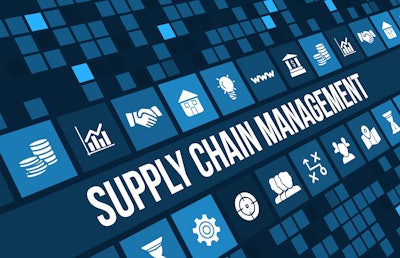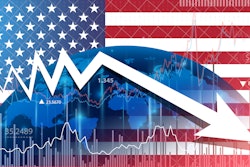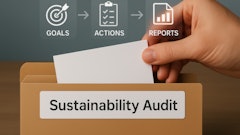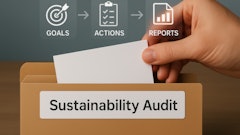
Sustainability has undoubtedly become a critical focus of supply chain strategy today, shaping how companies operate, innovate and meet rising stakeholder expectations. Businesses are facing mounting pressure to enhance their environmental, social and governance (ESG) performance to ensure their operations align with evolving regulatory, customer and investor demands. However, despite the increasing spotlight being placed on sustainability, many companies still face intimidating obstacles with implementation, including financial constraints, complex regulations and ethical standards.
So, how can businesses navigate these challenges? The answer lies in leveraging supply chain management expertise and innovation.
Cost of sustainable investments
One of the most significant hurdles to creating a sustainable supply chain can be the substantial upfront cost of some investments, which can discourage a business before it even gets started. Whether it’s introducing an electric vehicle fleet or investing in new technologies, for example, some initiatives demand higher initial costs. Balancing these expenses with expectations for immediate profitability can be difficult as benefits may take time to materialize. Without a clear understanding of the long-term return on investment, some may hesitate to take important steps forward that could also cut costs in the long run. That’s where education comes in—having buy in from the top down is crucial to making a case for these investments.
Overcoming this challenge can often be made easier when companies tap into the expertise and expansive network and resource sharing offered by third-party logistics providers. These resources can help stakeholders take a more comprehensive view of their supply chains to implement the five levers of decarbonization from the Alliance for Logistics Innovation through Collaboration in Europe (ALICE): freight demand, modal shift, optimized assets use, energy efficiency and low-emissions energy. While some sustainable practices require upfront investments, others may not necessarily. For example, the levers of route and load optimization, energy efficiency and modal shift to combine less carbon intensive transport modes may not generate additional costs and can sometimes even lead to economic gains. Ultimately, third-party logistics providers can offer options for flexible, scalable solutions that businesses can choose from to best suit their unique needs, timelines and profit goals that help meet their definition of success. The focus should be on practicality, remembering that often small, consistent changes made across the board can have the most significant long-term impact.
Complex regulations
The regulatory landscape for ESG compliance is becoming increasingly fragmented across state, federal and global levels, making it even more challenging for businesses operating in multiple jurisdictions. For instance, in the United States, the Securities and Exchange Commission has proposed climate disclosure requirements for publicly traded companies, mandating transparency in greenhouse gas emissions, climate-related risks and financial accountability. However, political shifts have introduced uncertainty, and now ESG-related regulations may be delayed or reversed at the federal level. Meanwhile, states like California and New York are moving ahead with their own stricter sustainability mandates such as carbon reduction targets and supply chain transparency measures. All the while, shareholders and customers are also advocating for increased transparency. This discrepancy creates compliance hurdles and heightens the risk of litigation for businesses navigating multiple regulatory pressures.
To manage these complexities, companies must stay proactive and adaptable. Bringing in ESG specialists and maintaining strong compliance teams can help track regulatory changes, ensure accurate reporting and mitigate legal risks. This includes having a comprehensive understanding of the entire value chain, including regular supplier audits and assessments to ensure compliance with ESG regulations. By working closely with logistics and supply chain partners experienced in ESG compliance, businesses can remain flexible when requirements shift—as they so often do. With an in-depth understanding of evolving regulations, they can offer strategic guidance and operational solutions, allowing businesses to remain compliant while optimizing supply chain performance. Preemptive and data-driven reporting is vital for current ESG awareness and risk mitigation while staying ahead of the curve with anticipated new regulations that may increase disclosures on these issues in the future.
Pressure of social and economic standards
Beyond financial and regulatory challenges, ESG pressures extend into the social aspects of supply chains as well. Labor practices, fair wages and workplace safety remain top concerns. Companies are also expected to engage in communities in meaningful ways, ensuring that supply chain operations in major transportation hubs, for instance, contribute positively to economic development and the overall quality of life of those living in the area. Additionally, sustainable packaging and efforts to promote a circular economy are growing priorities as businesses look to minimize waste and environmental impact while keeping their customers satisfied as their priorities shift.
To meet these standards, companies must integrate social responsibility into supply chain strategies. Prioritizing workforce well-being through competitive wages, comprehensive training and proactive community engagement initiatives are crucial. Companies must also explore innovative solutions in areas such as reusable packaging and reverse logistics to create a more resilient and responsible supply chain. For example, advancements in right-sized packaging are transforming the industry with its ability to reduce packaging material waste and create a more efficient shipping and fulfillment process while enhancing the customer delivery experience.
ESG opportunities in the supply chain
ESG challenges are complex and continuously evolving, requiring businesses to stay updated and agile in their strategies. However, these challenges also create opportunities for companies to enhance the resilience of their supply chains, establish a competitive advantage and better align with their customers’ values. By proactively integrating sustainable practices into their operations, businesses can meet regulatory expectations, improve resource efficiency and cut costs over time.
In addition to environmental benefits, a strong ESG strategy positions companies to better serve their customers, workforce and communities. Consumers are prioritizing ethical and sustainable business practices more and more, which motivates organizations to demonstrate transparency and accountability. At the same time, investing in employee and societal support through fair wages, safe working conditions and community involvement develops trust and promotes engagement among stakeholders. By viewing ESG solutions as a path toward lasting success rather than a burden, companies can build and maintain supply chains that satisfy customers, minimize negative environmental impact, and empower those both within and outside their operations for a better tomorrow.



















